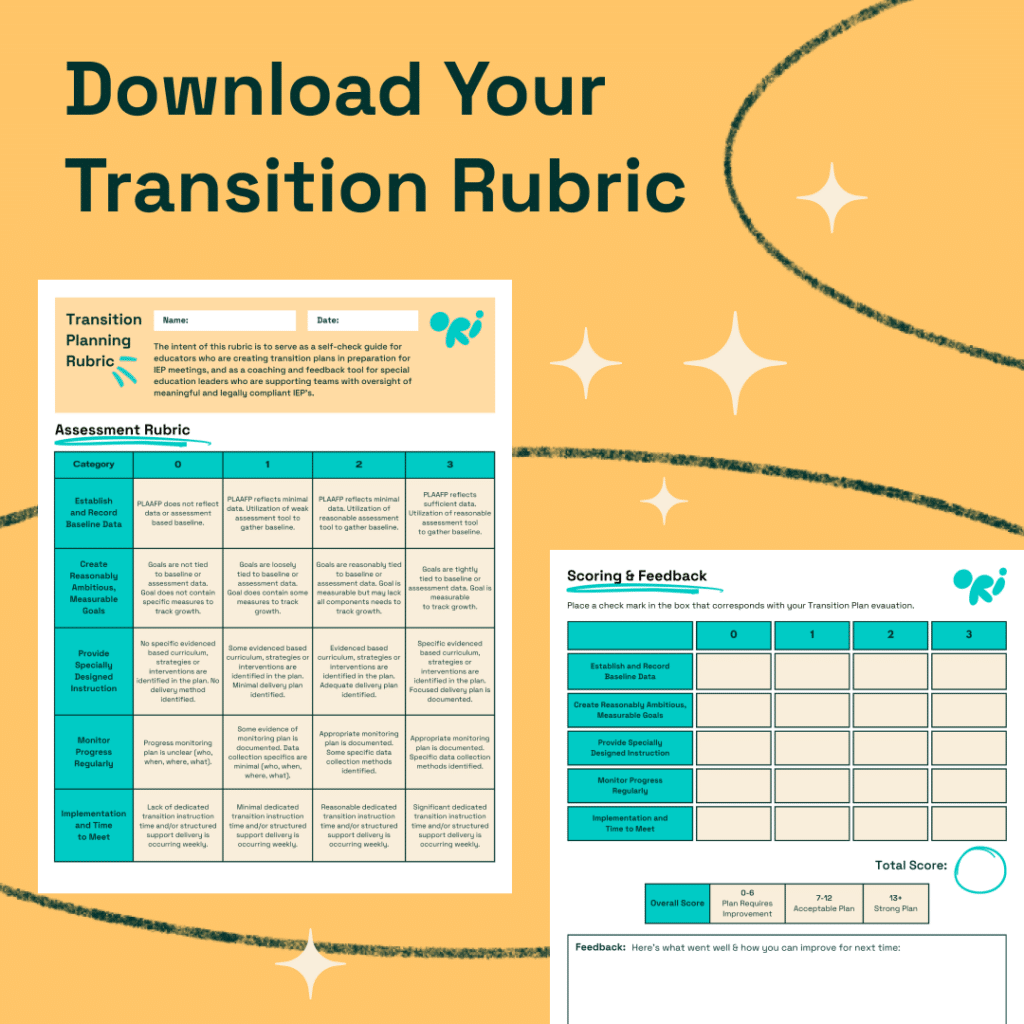


When I have the opportunity to speak with special education directors, I ask as many questions as time allows. I find many of the questions result in responses that are consistent and predictable; whereas, other questions often yield a far greater diversity of answers.
For example, most special education directors name time restrictions, overwhelming paperwork, compliance issues, and teacher shortages as the greatest challenges of their everyday work life – or some close resemblance to these issues.
Conversely, when asking these same leaders about what steps they would take to significantly improve their transition planning processes and programming, I am most often met with a lengthy pause which is quickly followed by a look of consternation.
At first, I was surprised at the variance in responses, but then it began to make sense. The tangible issues that slow us down and make our work lives harder are often right in front of us on a daily basis.
It is not hard to identify blocks, barriers, and challenges. That said, the ability to revamp, change, markedly improve, or re-imagine a given practice or program is much harder.
I once had a clever special education director coyly respond to my question with “If I knew how to do it, don’t you think I would have done it by now?” With a sheepish grin, I replied, “Touche, my friend. Touche.”
All too often the barrier to change and growth isn’t a willingness or desire to do so, it is the lack of a clear path, resources, and a blueprint.
To that point, as a professional community of people who support special educators in the transition planning process, we need to spend more time reviewing trending research, talking to experts, observing leading approaches in the schools and communities, and sharing our findings with the field.
In that spirit, and after lengthy conversations with professionals and experts who serve the special education community, I came up with the following 3 steps to boost and markedly improve your transition programming.
Our Transition Planning Rubric is designed to support district leaders and educators in guiding their teams towards excellence in transition planning.
It provides comprehensive criteria that cover the breadth of transition planning, from gauging student engagement to evaluating post-secondary goals and services.
Expand your team’s capabilities and improve the success of IEP meetings.

Interview and survey your parents, students (current and former), special educators, general educators, local leaders of community-based employment service programs, transition experts at local and state universities, members of organizations like CEC and DCDT, and anyone else you believe has important information on the topic of transition planning in your community to share.
Beginning with feedback from key stakeholders not only achieves buy-in for your transition initiatives but also:
By reviewing articles, trending research, and expert organization documents, you will uncover innovative and new initiatives, expand your repertoire of ideas for new programming, likely uncover and adopt more evidence-based and research-based practices, and spark new and progressive ideas.
After this step, you should have the following:
See what Ori Learning can do for your school or district.
With an objective and analytical eye, review the continuum of transition services and the overall quality of the programming you currently provide.
Since its late addition to federal law via the 1997 IDEA reauthorization, transition programming has often not received the focus and extensive efforts afforded to other substantive areas of the IDEA.
Over the last few decades, the need for transition planning has only become more important and present in due process hearings and litigation. However, as we discussed in a previous article, our collective focus and effort in this area have not increased at the same pace.
For that reason, a number of districts in the U.S. do not have a broad array of transition services and supports – and those services are often provided at various degrees of quality dependent on the severity of the disability.
So, with that said, let it go and give yourself some grace.
The key to improving practice in special education is simply to identify the area of need and make a firm commitment to addressing it.
After step 2, you should have the following:
Explore the 4 key components of a successful transition curriculum, including experiential learning and community engagement.

Remember, an architectural blueprint only provides the overall design and measurements of the structure. It does not go into the detail of how to actually build or bring the structure to fruition. Similarly, you don’t have to solve all of the questions and provide extensive detail today. Let’s first start with your vision and the general design of your new program.
The most important element of launching a new program is determining what needs to be done, how it is going to be done, what you need to get it done, and how you know when it is done.
I have developed a simple, yet efficient process with sample priority areas. You can find more details in the checklist below.
After going through this checklist, you should have the following:

Time restrictions, overwhelming paperwork, compliance issues, and teacher shortages are frequently mentioned challenges.
Conducting research, evaluating current programs, and creating a new blueprint with specific focus areas and SMART goals are recommended.
Feedback from parents, students, and educators increases buy-in, ideas, perspectives, and creates a collegial work environment.
Now that you have an extensive amount of information from your most important stakeholders; rated, ranked, and reviewed your current transition programs; reviewed the literature base in transition planning; and consulted with experts and expert organizations, you are more than ready to re-imagine your transition program.
Still not sure if your transition planning is the best it can be? Get in touch with us today to discuss how implementing Ori Learning’s solution can help you markedly improve transition outcomes across your school or district.

